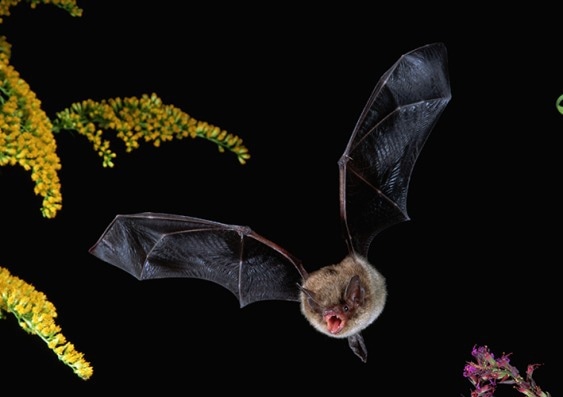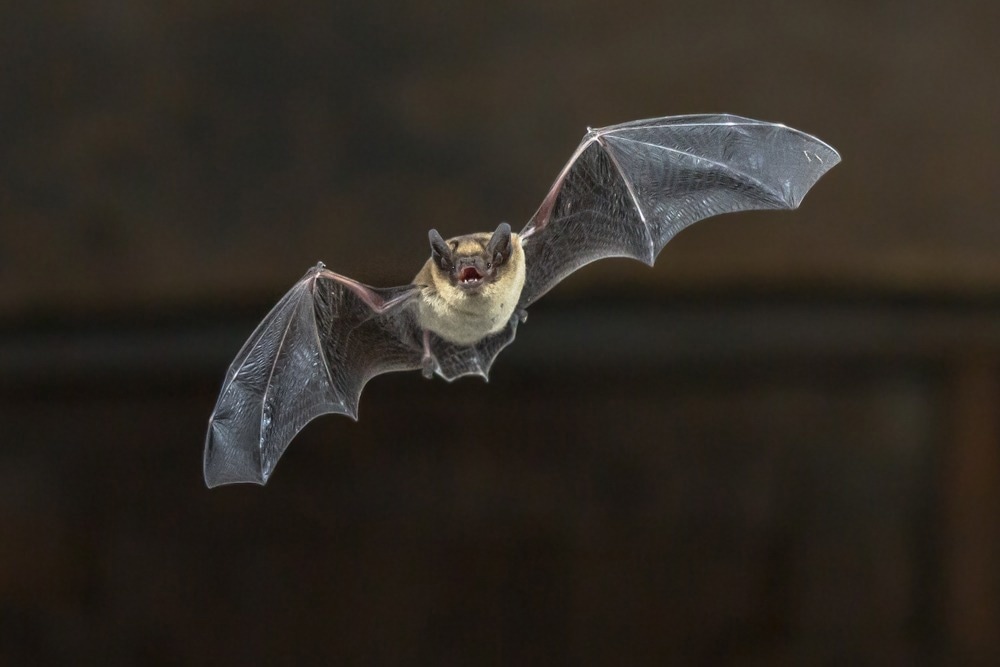Reviewed by Danielle Ellis, B.Sc.Oct 19 2023
Bats have one of the poorest fossil records among mammals, with approximately 80% of it estimated as missing.
 Most bats use echolocation - using sound emitted from their mouths or noses - to sense their surroundings. Image Credit: Getty Images
Most bats use echolocation - using sound emitted from their mouths or noses - to sense their surroundings. Image Credit: Getty Images
This scarcity of fossils makes it challenging to determine the precise timing of their initial flight, cave roosting, or the development of their unique echolocation, which involves “seeing” in the dark using sound.
However, French paleontologists uncovered a nearly perfectly preserved bat's skull in a cave dating back about 50 million years, shedding new light on our understanding of this ancient, hypothetical creature.
Sue Hand, an Emeritus Professor at UNSW Sydney's School of Biological Earth and Environmental Sciences, is a prominent paleontologist specializing in bat evolution. She spearheaded the examination of the skull, which was published in the current issue of the journal Current Biology.

Image Credit: Rudmer Zwerver/Shutterstock.com
The analysis was a collaborative effort involving Dr Jacob Maugoust and Professor Maeva Orliac from the University of Montpellier in France, as well as Professor Robin Beck from the University of Salford in the UK.
According to Professor Hand, before the unearthing of this skull, which was part of a collection of 23 fossilized individuals from the extinct species Vielasia sigei found in the cave, the fossil record consisted solely of fragmentary remains or entirely flattened skeletons of early bats.
We don’t know very much about the beginnings of bats because we don’t have the missing links like we do, say, between dinosaurs and modern birds. The oldest bat fossil is about 57 million years old, and it's a single tooth from a site in Portugal – that's all we know about it. The first bats are all just known from fragmentary fossils, mostly teeth. When bats appear in the fossil record a little later, about 52 million years ago, some are wonderfully complete bats, but they’re flattened.”
Sue Hand, Emeritus Professor, School of Biological Earth and Environmental Sciences, University of New South Wales
Although these flattened specimens, as Professor Hand describes, are “beautifully preserved,” the compaction caused by layers of rock deposition over millions of years complicates the precise determination of the three-dimensional arrangement of the bones.
When it comes to identifying whether a fossil belongs to a bat species that already utilized echolocation, having detailed and accurate information about the skull's anatomy becomes critically important.
In modern bats, between the voice box and the ear, there are some bones called the hyoid bones. In all modern bats that echolocate, one of these bones directly contacts the middle ear bones and appears to be involved in transmitting high frequency sound. But in the flattened fossils, while we can see these various bones, there is a question about their precise relationships to each other. This has led to a lot of debate among scientists about whether or not a species used echolocation.”
Sue Hand, Emeritus Professor, School of Biological Earth and Environmental Sciences, University of New South Wales
Uncrushed Skull
In the instance of Vielasia sigei, the skull is not only nearly complete but has also been conserved in limestone, maintaining its original three-dimensional shape, which the scientists refer to as “uncrushed.”
“In this particular bat, we can see more directly what's going on deeper, in the inner ear. We took fine measurements of that inner ear bone and compared it with that in the bats that do echolocate today and bats that don’t, and it sits in the middle of the ones that echolocate,” notes Prof. Hand.
Professor Hand clarifies that not all bats are capable of echolocation. For instance, flying foxes, commonly observed in the Sydney night sky around areas like the Botanical Gardens, Centennial Park, and the Royal National Park, rely on their exceptional eyesight for navigation and locating fruit, as they do not employ echolocation.
In contrast, Sydney's microbats, including species like the Eastern Bentwing Bat, Gould’s Wattled Bat, and the Chocolate Wattled Bat, are renowned for their ability to navigate and capture insects by utilizing feedback from the high-frequency sounds they emit.
Although Professor Hand does not definitively assert that Vielasia sigei employed echolocation with absolute certainty, she expresses that the new evidence is highly persuasive.
It’s very convincing that the type of echolocation some of these early bats used was indistinguishable from what many echolocating bats use today, and at 50 million years ago, this is well ahead of whales developing this ability. Prior to this find, we were only really certain that echolocation developed in the modern families of bats.”
Sue Hand, Emeritus Professor, School of Biological Earth and Environmental Sciences, University of New South Wales
Back to the Bat Cave
The French team unearthed a total of 400 fossilized bones and teeth within the cave located in south-western France, which collectively represented 23 individuals. Vielasia, while not a direct precursor to modern-day bats, may have been closely related to them. This small bat had a diminutive size, with its uncrushed skull measuring just 1.8 cm in length.
Prof. Hand adds, “There were 23 of these wonderful little bats living in a cave, which also makes it the oldest cave-dwelling bat in the world that we know of. We didn't think that these early bats actually lived in caves. The information had been that they lived in trees around lakes and in forests which stretched right up to both poles because the Earth was very warm at this time.”
However, as the greenhouse conditions began to deteriorate later during the early Eocene period, approximately 50 million years ago, which coincides with the time when this bat species lived, there were far more pronounced and erratic temperature fluctuations.
Prof. Hand states, “So it could be that this bat lived in a cave because this is much more stable environment.”
Passing the Baton
Regardless of whether the analysis of the uncrushed Vielasia skull has definitively resolved the debate regarding echolocation in early bats, Professor Hand anticipates that it will serve as an inspiration for additional investigations into the fossil record.
Prof. Hand concludes, “We think some of the characteristics of this bat would have also characterized the last common ancestor for modern bats. So it's exciting, and it is actually going to be an important specimen that people will get a lot of information from and use in their own analyses.”
Source:
Journal reference:
Hand, S. J., et al. (2023) A 50-million-year-old, three-dimensionally preserved bat skull supports an early origin for modern echolocation. Current Biology. doi.org/10.1016/j.cub.2023.09.043.